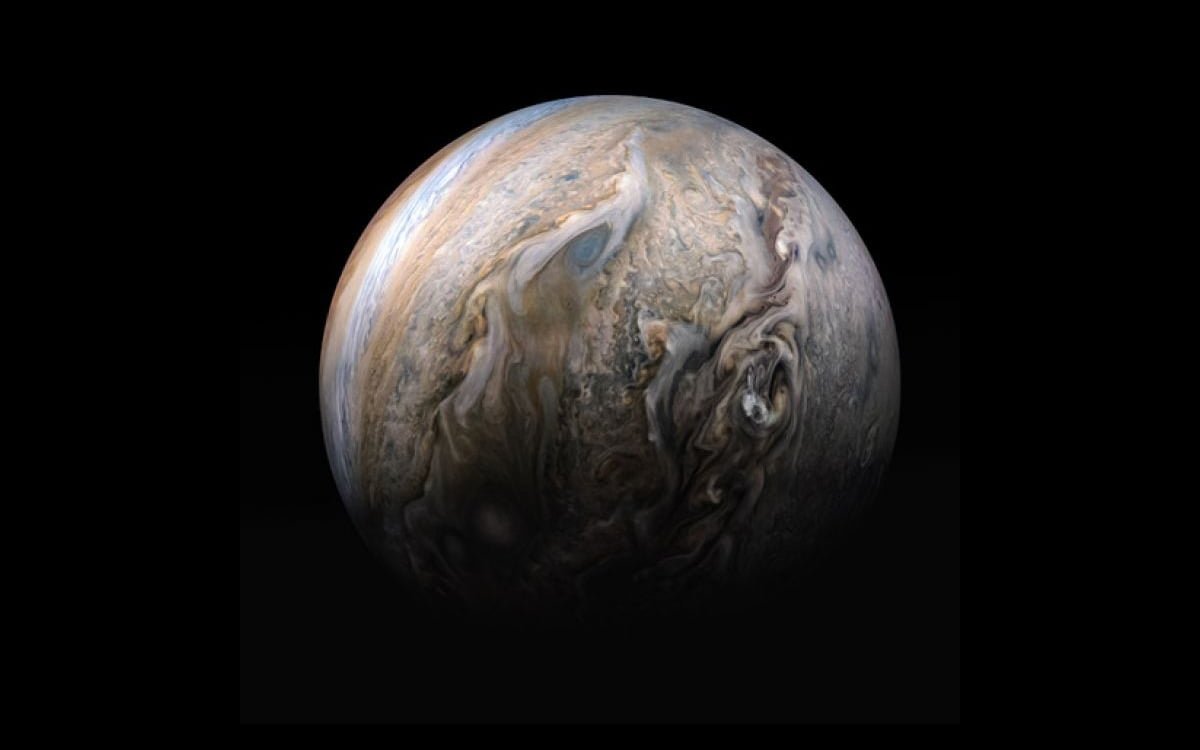NASA’s Juno spacecraft orbits the largest planet in the solar system to learn more about its properties, and often takes breathtaking images of the gas giant, Jupiter. Now, Juno’s images have focused on colorful clouds on Jupiter and NASA revealed them to show how beautiful our surroundings are in the solar system. The swirling clouds feature a beautiful blue color, and they reveal a lot about the climate on Jupiter.
NASA publicly revealed the images on its official Twitter page. The images of Jupiter were caught last month, during the most recent flyby of Juno in that area. When the photos came back to Earth, NASA processed and published them.
A little cloud watching is always fun. What do you see? A blue-eyed dragon? Coffee creamer? One thing’s for sure: my team sees lots of science. I captured this stunning view of Jupiter’s stormy northern hemisphere last month. Details: https://t.co/h5F2zAMPYC pic.twitter.com/WFjONgEaq9
— NASA’s Juno Mission (@NASAJuno) June 20, 2019
The images are particularly important because they teach scientists a lot about Jupiter’s northern hemisphere that suffers from very stormy weather that provides the view of swirling, blue clouds. The spacecraft took the photo of the colorful clouds on Jupiter at a distance of between 11,600 miles and 5,400 miles above the cloud tops of the planet.
The Juno mission team also pointed out some interesting details about the clouds as viewed by them. In the same Twitter post, they point out that some of the clouds greatly resemble a blue-eyed dragon, while another set of clouds closely resembles “coffee creamer,” it says in the post. It appears that imagining shapes in the clouds is not only a thing on Earth, but also on a gas giant such as Jupiter.
If you look at the images in more detail, you can see the chaotic atmosphere that forms these clouds. The photo description on Juno’s website says that to make this wonderful image, NASA’s Juno spacecraft had to combine four images of colorful clouds on Jupiter to create this mesmerizing view.
NASA also needed to use a color-enhanced image of Jupiter, and compare it to the old imagery of the planet to produce the unprecedented details that we see. The color-enhanced image of Jupiter was produced by a citizen scientist, Kevin M. Gill.
The new images of the spacecraft were obtained at about 12.52 a.m. PDT (3:52 a.m. EDT) and 1:03 a.m. PDT (4:03 a.m. EDT) on May 29, during the 20th flyby of the spacecraft around Jupiter. If you wish to see more images of the gas giant, head over to the Juno mission website.
Aside from Juno, NASA is working on another mission for the biggest planet in the solar system, particularly one of its most significant moons, Europa. NASA has been building a spacecraft called The Europa Clipper which was set to explore the surface of its moon, specifically designed for the icy surface in 2023.
However, according to an investigation conducted in May by NASA, the upcoming mission will have to be postponed for a later date, because there are several issues with the clipper that might prevent it from doing its mission properly. Another issue is related to the lack of staff that would solely focus on the Europa Clipper mission.





